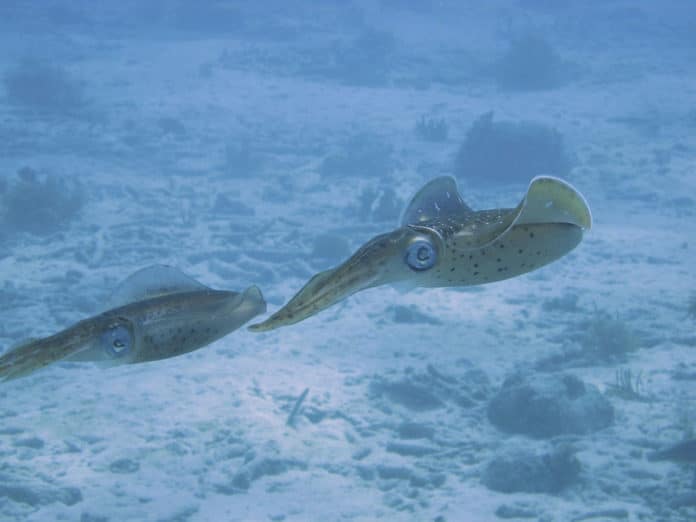Squids have evolved a highly acute visual system with a cup-shaped retina and a novel refractive lens in the anterior. This is important for several sophisticated behaviors, including predation, mating, and camouflage.
However, less is known about the molecular genetics of lens development in the cephalopod. In a new study, a Harvard lab moves closer to unraveling the mystery.
Scientists from the FAS Center for Systems Biology discovered a network of genes essential in squid eye development that also play a crucial role in limb development across animals. These genes have been repurposed in squid to make camera-lens-type eyes.
The results could help scientists understand how these genes and the cellular pathways they are known to work on genuine function in both cephalopods and vertebrates. This also offers an innovative example of how different animal lineages can skillfully hijack the genetic tools and adapt them to accomplish surprising evolutionary feats.
Kristen Koenig, a John Harvard Distinguished Science Fellow and senior author of the study, said, “This was pretty shocking because very few people think that an eye lens is very much like a leg. One of the big questions in biology is how do you make a novel [morphological features]. The squid lens is a novelty to their lineage. They had to make a lens from scratch to see well. What this work implies is that you have to take the tools that you have and use them for new purposes.”
Scientists theorized that the network of genes might not essentially create specific organs. Still, they may be doing something more generic that is useful for certain developmental functions, including both limb and lens development. These other developmental functions could include precise gene expression that places the suitable types, numbers, and shapes of cells in the right place at the right time.
Kyle J. McCulloch, a postdoctoral fellow in the Koenig lab and lead author on the study, said, “Our finding breaks down the idea that the network evolved solely for ‘limb outgrowth’ function, but rather serves a broader function for any sort of patterning requiring this concentric-circle-like motif, including limbs, lens, tooth growth, and potentially others we have yet to identify.”
Scientists manipulated a cellular path called the WNT signaling pathway. They did so to get a better idea of these genes’ role in squid eye development.
They were surprised to know how a group of genes essential for leg development made the eye lens and what the WNT signaling pathway was doing in lens development. In an experiment on squid embryos, they found that over-activating this pathway resulted in losing the eye lens.
This led scientists to believe that differences in how WNT signaling acts on these genes may be necessary for how the squid controls gene expression in the limb versus the lens.
Koenig said, “Ultimately, this work shows the power of studying diverse systems. It’s surprising that genes that we have studied so well in other model systems like fruit flies and vertebrates and that we thought we understood their function together was to make legs are used for this totally different organ in the squid. It changes how we think about what these canonical genes do in development. By looking across the diversity of life, we actually might understand what these genes are doing more accurately.”
Journal Reference:
- Stephanie Neal et al. Co-option of the limb patterning program in cephalopod eye development. DOI: 10.1186/s12915-021-01182-2
